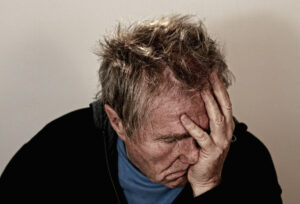
Much Is Known About Bipolar Disorder Treatment
There was a time not that long ago when successfully treating bipolar disorder was a hit-and-miss affair. This is no longer true. A lot is now known about bipolar disorder and its different presentations and phases and how to best treat each. A quick Google search would give the wrong impression with discouraging words about how hard it is to treat bipolar disorder. This is usually not true. Find a good psychiatrist with experience in treating bipolar disorder. A doctor who has access to provide both outpatient and inpatient care. Things will go well.
Bipolar Disorder Treatment – The Three Moods
Here’s the thing about bipolar disorder treatment. There are three moods that are part of bipolar disorder. Okay, yes, we know bipolar is two moods. But to target where a person needs to be, one needs all three moods. And, each of them needs medical care. One is mania, the bipolar “high”. The second one is depression, the down mood. Finally, the third is the mood in the middle. Normal mood. Or, near normal. You might ask, “Why does a person with a normal mood need a doctor?” Because in bipolar disorder one is striving for a consistent normal mood. And, it can be hard to get to and stay at a normal mood. Without medical care and medication a normal mood can easily, quickly, and unpredictably slide into depression or mania. So, here they are, one at a time.
Bipolar Disorder Treatment – Mania
Mania is often such a high-energy, super-active mood that family, friends, doctors, and everybody is thrown into chaos trying to calm the person. Or, trying to hide from the person. It’s most always a crisis. They need medication and medical care. They might wind up in an emergency room. Every book on Emergency Psychiatry has a chapter on mania. If it’s just mild mania, that’s good news. It still needs to be stopped or it could get worse, slide quickly right into full mania. A medication to stabilize mood would help. Maybe lithium or valproate along with a calming medication like quetiapine.
Bipolar Disorder Treatment – Depression
Depression in bipolar disorder is usually (but not always) less of an emergency than mania. The exception is if thoughts of suicide come with the depression. Depression without thoughts of suicide can still be difficult to treat. The depression can really stubbornly resist treatment. While treating the depression there is a risk of the person becoming less depressed but then suddenly suicidal or suddenly manic. The situation requires a careful balance of medication and concerned watching. So, because of this risk, one treats the depression while all the time watching for thoughts of suicide and signs of mania.
Bipolar Disorder Treatment – Suicidality in Bipolar Depression
What if a person is so severely depressed that suicide seems like a good idea? The fast miracle treatment in the past was electroconvulsive therapy (ECT). But some places and some people don’t like ECT, miracle or not. The good news is that now we have fast-acting medications, like Esketamine nasal spray (Spravato) and ketamine. The past ten years many ketamine clinics have been started that treat depression with suicidal ideas with ketamine. The esketamine nasal spray or ketamine injections give short term relief from suicidal thoughts and depression. ECT works fast and gives longer lasting relief from depression. So, you see, we have good treatments to save lives. And once the person is feeling better with a short lasting medication, a longer-lasting medication can be started that will take a few weeks to start working but then will work for years.
A Reader Asks:
Why is it necessary to treat mania? I’ve heard of people getting really rich when they’re manic.
It’s true, there are stories about people who, when manic, develop an idea and make a lot of money. Almost always these pursuits are get-rich-quick schemes that work at first, though truthfully most of the time they don’t even work at first. Rarely they do work at all and allow the person to accumulate a lot of money. And, as with Paul Harvey’s The Rest of The Story, there’s more to it and the situation usually does not end well. If the mania continues, judgment continues to deteriorate. At some point a decision is made that puts too much at risk for no reason, and the wealth goes down the drain quickly. If the mania stops and the person becomes depressed, the house of cards usually falls without the energy of mania to keep it going. Depression and huge financial losses are one path to thinking of suicide.
Medications for Bipolar Depression
As we said above, depression in bipolar disorder can be difficult to treat. Most doctors would probably start two medications right away to stop the depression as fast as possible. And when those two medications work, leave them at the same dose for at least a few months. Then, if the medications have worked well, some doctors would leave them as they are for a long time to prevent any more depressions. If the depression is not that bad maybe a doctor might start just one medication. For a severe, treatment-resistant depression it might be time for esketamine, ketamine, or ECT, along with one or two added medications to keep mood stable once it’s closer to normal.
What Are These Other Bipolar Disorder Medications?
Common medications to keep mood stable are lithium, valproate, and carbamazepine. Others that a physician might use are lamotrigine, topiramate, and oxcarbazepine. A medicine from a family of medications called “atypical antipsychotics” might be used. (It’s not a pleasant name but sadly that’s what they’re called.) They’re medications like quetiapine, olanzapine, and others. Medications often used just for depression are imipramine or, if added to olanzepine, fluoxetine. Others might be tried.
Why Not Treat Bipolar Depression like Any Other Depression?
This question is a hot topic in medicine, and has been for half a century. At times the debate becomes heated. There are some studies that say that treating bipolar depression like ordinary depression can cause a manic episode. Yes, the medication for depression stops the depression, but then sends the person into mania. The person might be out of the frying pan but he’s into the fire! The other viewpoint comes from other studies that don’t find that depressed people change to mania when taking a medication for depression. If you or a family member has bipolar depression, go see your doctor. You and your doctor need to decide this choice together. Do understand, though, that if you become manic, your doctor then has to treat your mania to get you to a normal mood.
Bipolar Disorder Treatment – Once Mood is Normal
Okay, so you are no longer manic and not depressed. All is good and you don’t need to worry about anything, right? Nope. You have to decide some things. You’re balanced in the middle of a teeter-totter and it’s too easy to tip one way or the other. Which medication will be the best to keep you stable? There are many, many good ones. You and your doctor will be able to discuss a few and you can choose one as a place to start.
Oh, Yeah, Real Life
Okay, you got us. We’ve made it sound easy. It’s not. Real life is not always a smooth road. You’re on good medications that you don’t dislike too much and that seem to be working. And then, you get depressed. Or manic. It’s a shocker that surprises everyone, especially you. When this happens, and it probably will, call your doctor. Then you and your doctor agree on a treatment plan. And you need to follow it. Look forward, look toward the future. Look back only to learn any lessons and to try to avoid any more surprises. Don’t blame anyone. It happens. Life happens.
Why Medication is Necessary
No one wants to take a medication all the time. We’re all the same in this regard. Having a doctor tell you that you have to take a medication (or two or three) every day feels bad. It’s like she’s giving you orders. Orders to do something that you don’t want to do. Everyone feels this way whether he/she has bipolar disorder or not. But if you want life to go well, you gotta do it, you gotta take your medication. Once you find the right medications that work for you and the side effects aren’t that bad, stay with them. Every day. As the years roll by you will be so happy that you did.
It’s a Gamble Without Medication
Are you a gambler? Without the medication every day you’re gambling. You’re standing at the roulette wheel of life. You wait to see whether the ball lands in a red or black pocket with your number. A manic high might start as a feeling-good hypomania, but then break through into a full mania. Or that bit of a tired feeling could slide slowly into a deep depression. Without medication you will do well only if Lady Luck is on your side. Lady Luck is never on anyone’s side for long. If you want to have a normal mood and a good day, take you meds.
Friends Forever
Once you find the right set of medications that work well with few side effects, it needs to become and stay your best friend for a long time. Your successful medication regimen will help you live well, live long, and have a good life. It’s hard to see medication as a good friend if you don’t like taking it. But you’ve got to do what you’ve got to do.
About the Search for the Right Medication
Eventually everyone who sticks with the search finds the right medication. But still it’s true that finding the right medication for you is the hard part. Your doctor can guide you on where to start. But no one knows, you don’t know, how a medication is going to feel until you take it. You try a first medication but its side effects are awful. Then on to try a second one and maybe it’s okay, but does it work? You don’t know until months and years go by and you’ve been able to avoid any mania or depression. And remember, eventually everyone who sticks with the search finds the right medication.
All the Good Medications Stabilize Your Mood
All the good medications stabilize your mood but not all of them are called “mood stabilizers”. The medications that keep bipolar mood stable come from a variety of medication families. One group is actually called “mood stabilizers, like lithium and valproate. Another group comes from a family called “atypical antipsychotics”. “Atypical antipsychotic” is not a relevant name when used for bipolar because in bipolar they just stabilize mood. They usually have nothing to do with psychosis. And, the “atypical” part of the drug family name is only about chemistry. The word “atypical” has nothing to do with the disorder being treated. The third medication group is the group of medications used for depression.
Bipolar is a Real Medical Disorder Needing Real Medications
We at the Neuroscience Research and Development Consultancy would recommend against trying to rely on “natural” medications, nutritional supplements, or homeopathic remedies. Bipolar is a real, physical, medical disorder, like heart disease or diabetes. “Natural” medications or supplements for bipolar disorder are like using a Band-Aid on cancer or a fruit smoothie for a heart attack. That is to say, it ain’t gonna work. It is true that too little is known about this area and it would be great if more research could be funded. But with what medical science knows now, these herbs and supplements do not work for bipolar disorder.
About Medication Side Effects
All medications have side effects. Any medication anyone takes or uses has side effects. If the medicine works, if it does something good, it’s going also to have some effect that you don’t want. And it’s frustrating that you might not know about the benefits for months but side effects are there right away.
You Can’t Treat Someone by Throwing Them a Capsule
Diabetes, For Example
Take diabetes, for example. Type I diabetes, where the person needs insulin. If a teenager develops Type I diabetes, how well would he do if you gave him a bottle of insulin and a syringe with a needle and said, “There you are.” No instructions. No explanations. The situation would not go well. Because of this all-to-human reality, diabetes experts have set up entire medical clinics just for diabetes education.
Same With Bipolar
Bipolar disorder is the same. If you have bipolar disorder you need instruction and education in addition to the right medication. But it’s even more of a dilemma because at least with diabetes the person’s brain is working fairly well most of the time. In bipolar, the brain is the organ with the problem. Enter “psychotherapy”. Learn about bipolar disorder. Educate yourself. Learn about your brain. Learn about what are you up against. Find the path to success and a good life.
One More Mention of ECT
As we mentioned at the start of this article, when the manic up or the depressed down is severe, just medications might not be enough. ECT might provide a safe rescue. There are times when ECT is safer than a medication. Like during pregnancy. Or someone who’s too elderly and/or medically ill to take the needed medication. Today’s ECT is actually a relatively gentle treatment.
Helpful links:
National Institute of Mental Health on Bipolar Disorder
National Library of Medicine PubMed Central on Treatment of Bipolar Disorder
Department of Health and Human Services Food and Drug Administration with
The Facts on Bipolar Disorder and FDA-Approved Treatments
The Mayo Clinic on Bipolar Disorder Diagnosis
National Alliance on Mental Illness on Treatment of Bipolar Disorder





